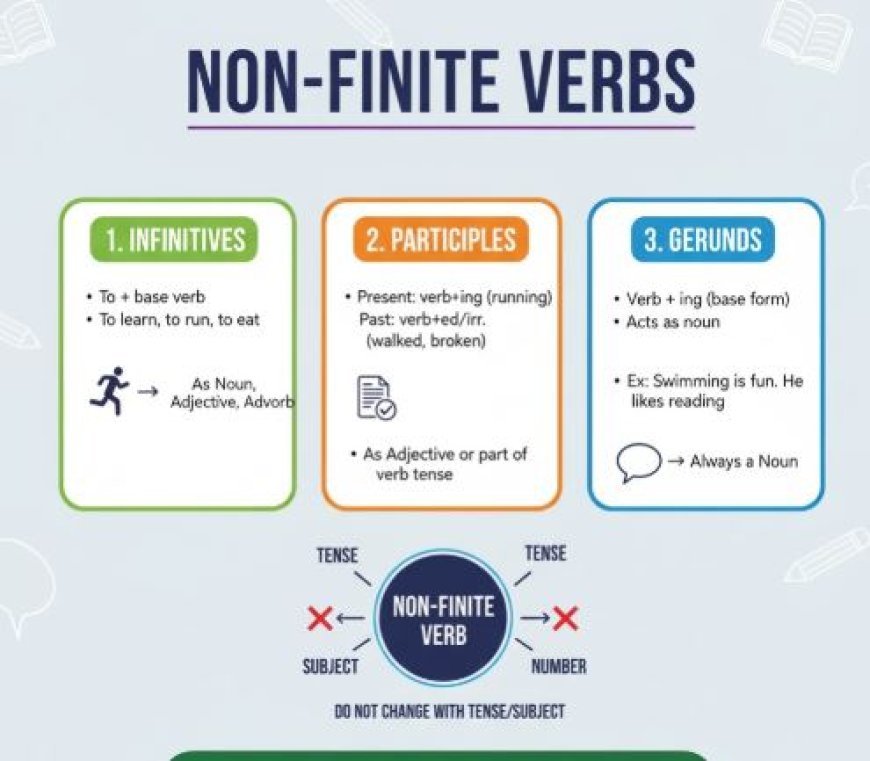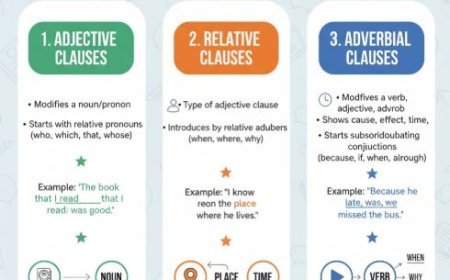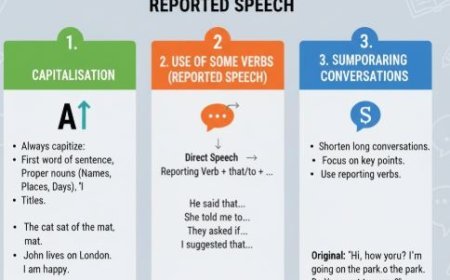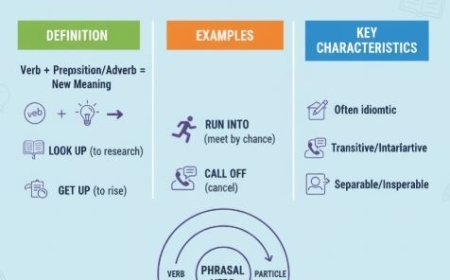NON FINITE VERBS
Non-finite verbs are like verb assistants. They help out main verbs (like "run" or "eat") but can't be the boss of the sentence themselves.

Non-Finite Verbs
A special group of verbs called non-finite verbs. These verbs act like chameleons, changing their form to fit different roles in a sentence, but unlike regular verbs, they can't be the main stars of the show.
1. The Three Faces of Non-Finite Verbs
Non-finite verbs can be divided into three categories:
Gerunds: These verbs end in -ing and act like nouns. They can be used as subjects, objects, or even to show possession.
- Example:Reading is my favorite hobby. (Subject)
- I enjoylistening to music. (Object)
- She has a passion forwriting. (Showing possession)
- Participles: These verbs also end in -ing (present participle) or -ed (past participle) and act like adjectives or adverbs.
- Present participle (adjectives): The laughing children played in the park.
- Past participle (adjectives): The tired student went to sleep.
- Present participle (adverbs): He ran jumping over the puddles.
- Infinitives: These verbs come in two forms: "to + verb" (bare infinitive) and "with + verb" (full infinitive). They can't stand alone but often accompany other verbs to express purpose, possibility, or obligation.
- Bare infinitive: I want to travel the world.
- Full infinitive: She promised to help him with the project.
2. Remember
Unlike regular verbs, non-finite verbs can't be the main verb in a sentence. They need the support of another verb to complete their meaning.
3. Putting It All Together: Examples in Action!
- Swimming in the ocean is refreshing. (Gerund as subject)
- I lovebaked (Past participle as adjective).
- She ranscreaming down the street. (Present participle as adverb)
- We hopeto see you soon. (Bare infinitive)
- He offeredto assist (Full infinitive).
What's Your Reaction?



































